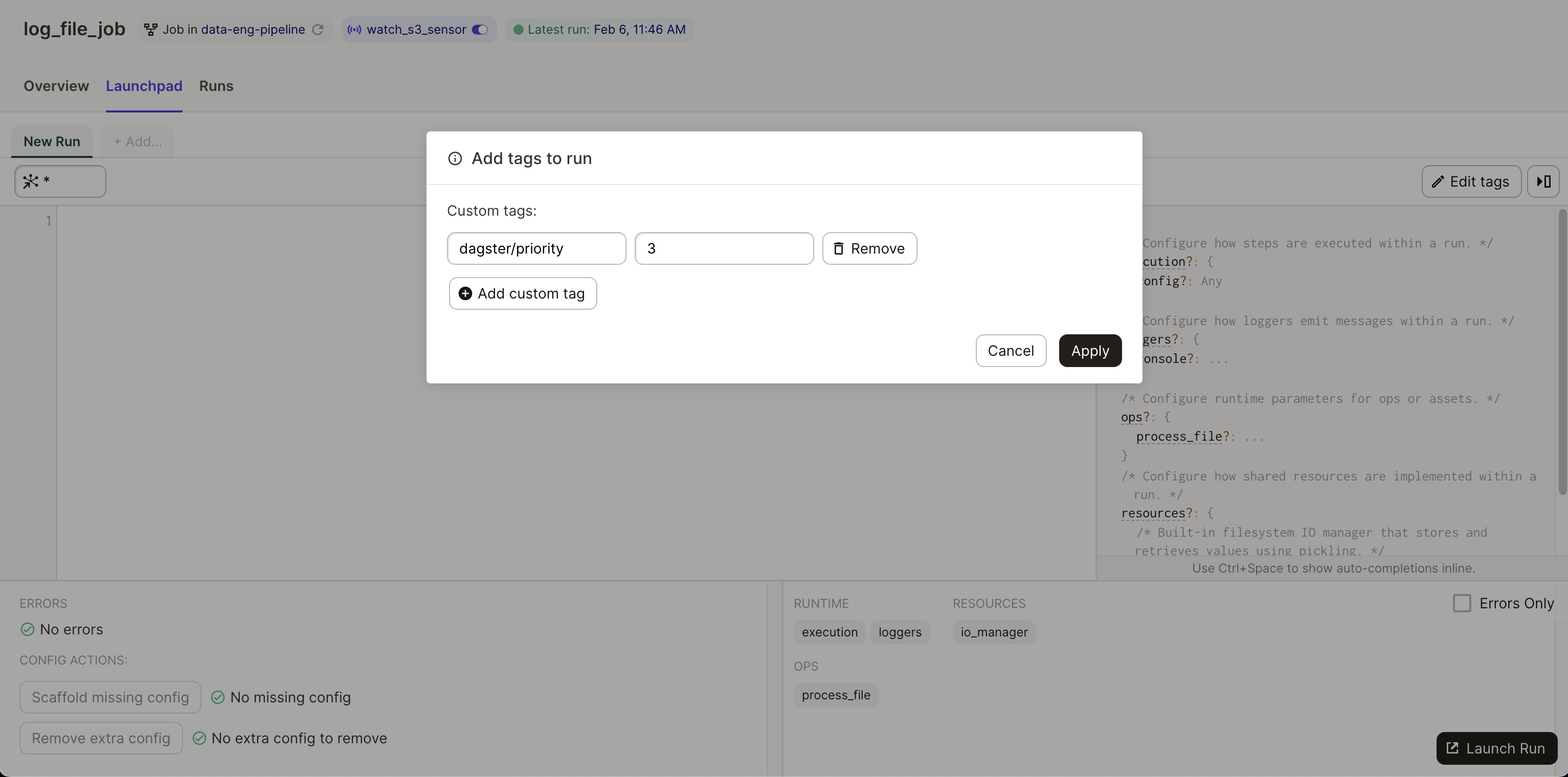Customizing run queue priority
When using a run coordinator, you can define custom prioritization rules for your Dagster instance.
By the end of this guide, you’ll:
- Understand how the run queue works
- Learn how to define custom prioritization rules
- Understand how prioritization rules and concurrency limits work together
Understanding the run queue
The run queue is a sequence of Dagster runs waiting to be executed. Dagster pulls runs from the queue and calls launch_run on submitted runs. It operates as a first-in, first-out priority queue.
For example, if three runs are submitted in the following order:
- Run
A - Run
B - Run
C
Then the runs will be launched in the same order: Run A, then B, then C. This will be true unless there are tag concurrency limits or prioritization rules in place, which we’ll cover later in this guide.
By default, all runs have a priority of 0. Dagster launches runs with higher priority first. If multiple runs have the same priority, Dagster will launch the runs in the order they're submitted to the queue.
Negative priorities are also allowed and can be useful for de-prioritizing sets of runs, such as backfills.
Defining queue prioritization rules
Custom priority is specified using the dagster/priority tag, which can be set in code on definitions or in the launchpad of the Dagster UI.
When defining a priority value, note that:
- Values must be integers specified as a string. For example:
"1" - Negative values are allowed. For example:
"-1"
- In Python
- In the Dagster UI
In Python
In this example, the priority is set to -1 with a dagster/priority tag value of "-1":
@job(tags={"dagster/priority": "3"})
def important_job(): ...
@schedule(
cron_schedule="* * * * *",
job_name="important_job",
execution_timezone="US/Central",
tags={"dagster/priority": "-1"},
)
def less_important_schedule(_): ...
In the Dagster UI
Using the launchpad in the Dagster UI, you can also override priority tag values. In this example, we clicked the Edit tags button to display the following modal:

Understanding prioritization rules and concurrency limits
Unless tag concurrency limits and/or prioritization rules are in place, queued runs are executed in the order they’re submitted to the queue. However, a run blocked by tag concurrency limits won’t block runs submitted after it.
Let’s walk through an example to demonstrate. In this example, three runs are submitted in the following order:
- Run
A, tagged asteam: docs - Run
B, tagged asteam: docs - Run
C, which isn’t tagged
Without configured limits, these runs will be launched in the order they were submitted, or run A, then B, then C.
Before any more runs are launched, let’s add the following configuration to our instance’s settings:
tag_concurrency_limits:
- key: "team"
limit: 1
Now, runs A and B can’t execute concurrently, while there isn’t a limit on run C. Assuming each run executes for a minimum of five minutes, the order in which the runs are launched will change.
If the runs are submitted in the same order as before - that is, A, B, C - then the following will occur:
- Run
Alaunches - Run
BB is skipped, as runAis in progress and concurrent runs are limited to1for theteamtag - Run
Claunches - Run
Blaunches after runAfinishes
To summarize, due to the concurrency limit, this configuration will change the run launching order to A, C, B.